How GOLD-ISMIA is embracing students in their combat against mercury
Storytelling Empowers Indonesian Students to Stamp Out Mercury Use
June 14, 2022
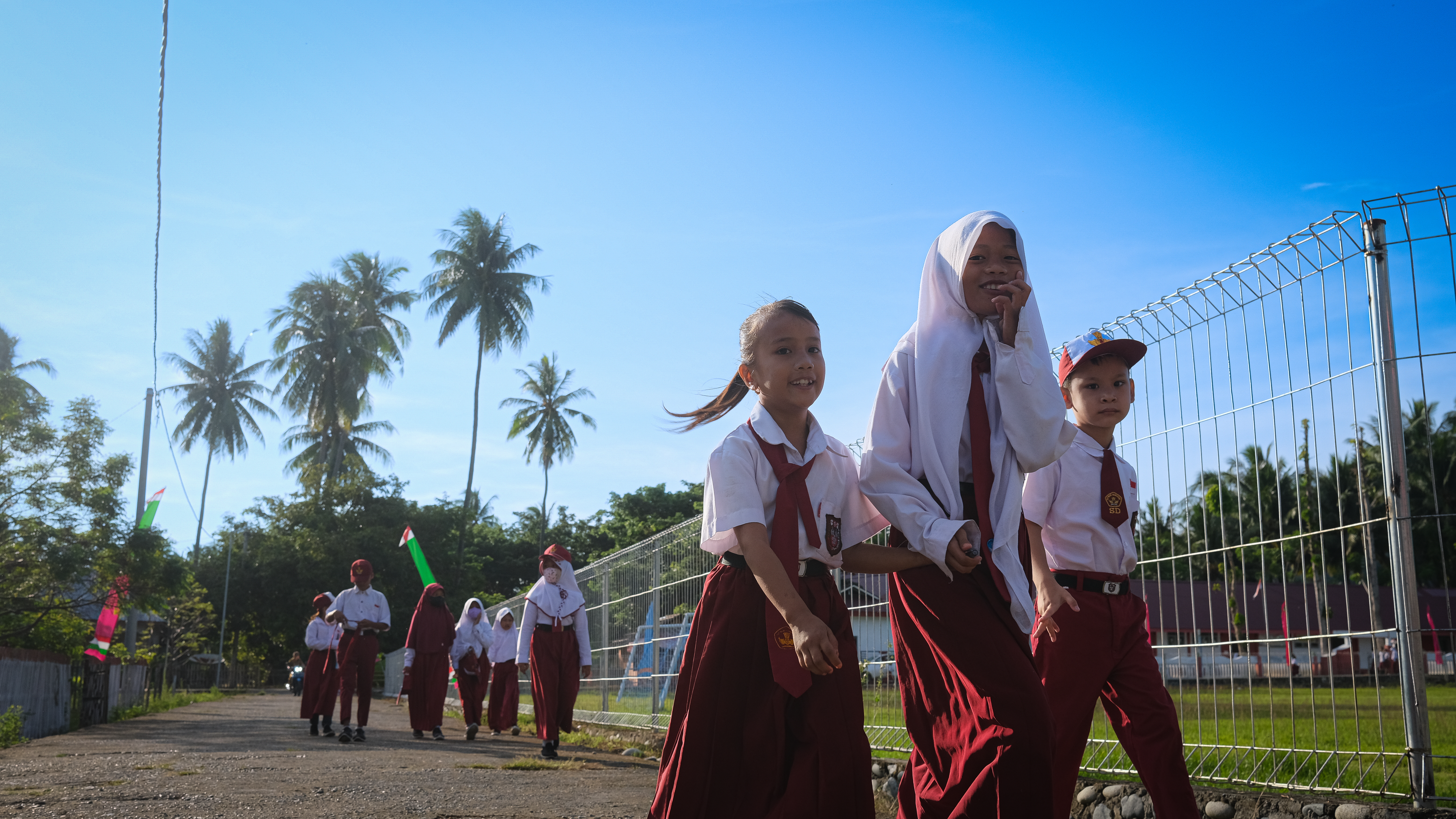
Rise and shine; a few minutes before the event, students from Hulawa, North Gorontalo march eagerly to the venue.
Eight-year-old Indonesian student Sri Meylani shared her simple dream of seeing her tropical village restored to its former glory.
"On my thirty-minute walk to school everyday, I pass by brown rivers,” said Sri who lives in the mining village of Hulawa on the northern coast of Gorontalo province, describing the color of the water contaminated with mercury. “I just want my village to be beautiful and have blue water,” the young student laments.
If you asked any eight year old anywhere else in the world about mercury, you would most likely get a blank stare in return. But for Sri and her friends, the term has become part of their everyday vocabulary. The substance, declared deadly by the WHO is part of the vocabulary of many students in the area nicknamed the “golden village” for its primarily occupation of gold mining.
Sri was among 644 primary school students from 12 schools in the area who gathered for a recent World Environment Day celebration organized by UNDP’s Gold Opportunities for Long Term Development (GOLD-ISMIA) projectStanding in the spotlight is award-winning storyteller, Awam Prakoso who seamlessly weaved characters, humor and suspense that highlights the dangers of mercury.
When kak Awam shared the story of a fictional village with similar characteristics to Hulawa - a community riddled with mercury - I was captivated by the students’ reactions. They stared yearningly and they seemed lost in their own imagination. The stories were peppered with all too familiar references such as contaminated rivers with no fish and ailing family members. As I saw the students’ reactions, I couldn't help but thinking that these teachings would indeed be carried forward and ingrained in their memories. Throughout the session, their laughter echoed throughout the large field, surrounded by Hulawa's modest houses; attracting curious villagers who came to see what the excitement was about. What they saw were students dressed in a sea of yellow, seated under a matching yellow tent on a sunny day. It was a scene that that I believed was perfectly suited to our GOLD-ISMIA ‘s campaign.

"We've been advocating for a mercury ban for years, and I'm hopeful that our efforts in North Gorontalo will help educate the next generation."Baiq Dewi Krisnayanti, GOLD-ISMIA National Project Manager.
Most of the population in Hulawa are artisanal and small-scale gold miners (ASGM), who have been using mercury in the extraction of gold for decades. Many of the students in Hulawa were the offspring of miners or live near mining waste zones, putting them at danger of long-term mercury impacts.
Baiq Dewi Krisnayanti, GOLD-ISMIA National Project Manager, noted that many of the children will grow up to follow their family's footsteps. "We've been advocating for a mercury ban for years, and I'm hopeful that our efforts in North Gorontalo will help educate the next generation. Creating a communal consciousness and raising awareness for environmental improvement. Especially for women and children, who are the most vulnerable to the harmful consequences of mercury ingestion."
UNDP Indonesia's GOLD-ISMIA project has been campaigning in the region to halt the use of mercury. North Gorontalo is among the six locations in the country where the program operates. The five-year Project, supported by the Global Environment Facilities, is part of the global planet GOLD programme's mission funded by the Global Environment Facilities, and led by UNDP. Built on a core value of ‘Leave No One Behind’, the Project has been actively reaching out to educators and embracing children in making mercury a history.

Healthy meal to start the day; three students are having breakfast in front of a warung (street stall) before attending the storytelling event.

"I still have time" a student waits patiently for his friends in front of his home before walking together to the event.
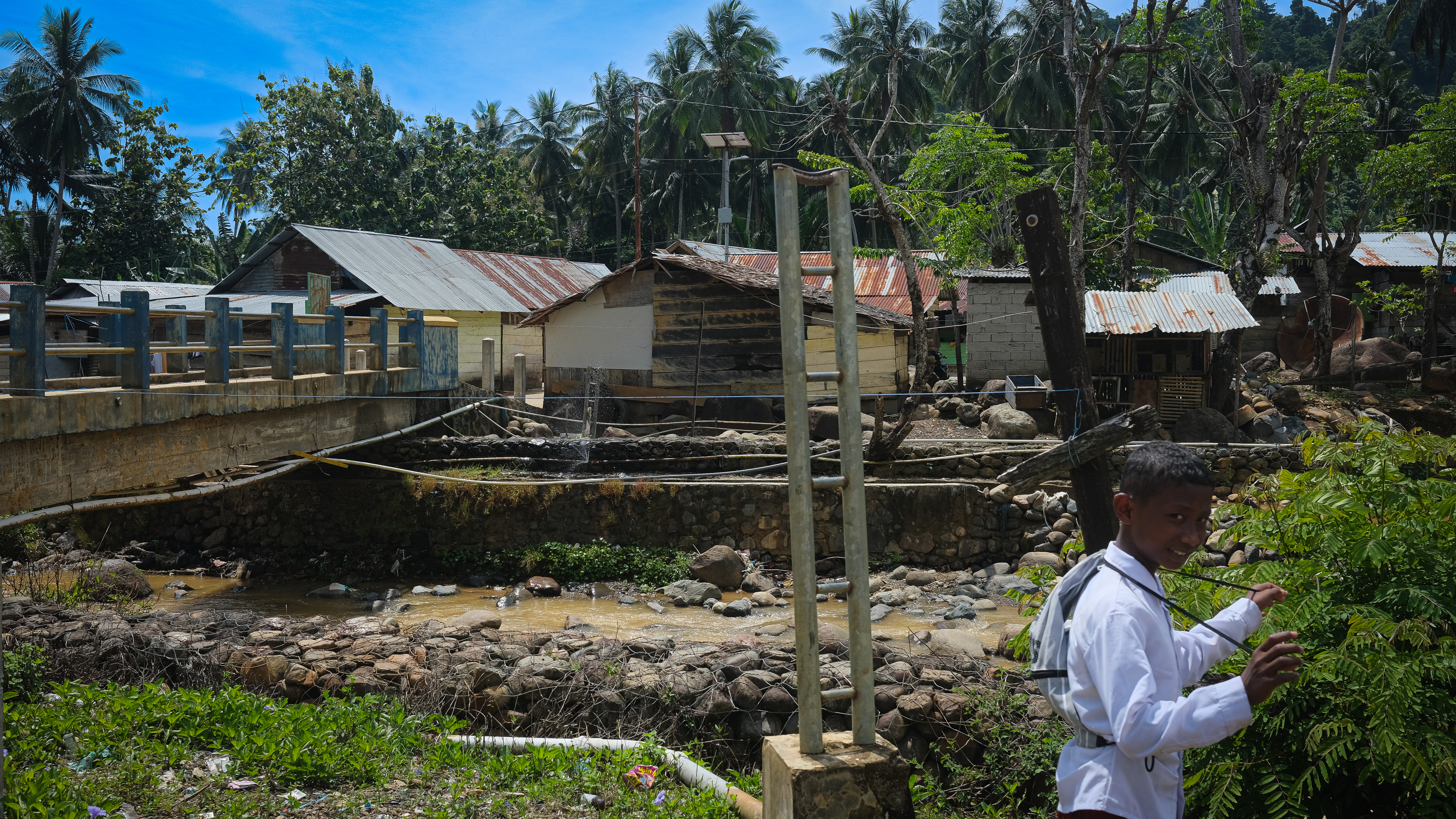
A student walks along the river who is often of the place for mercury disposal.
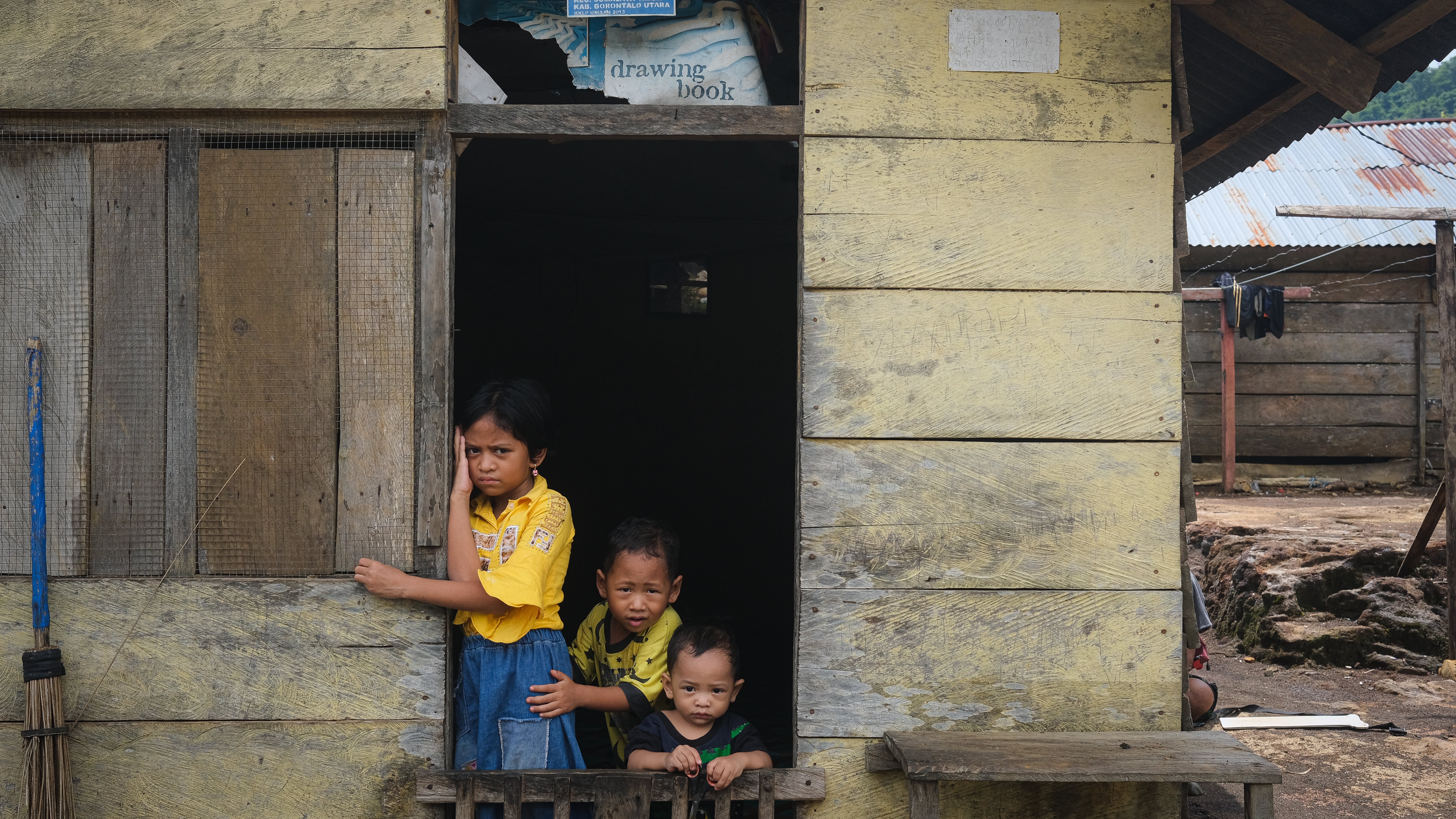
Peek-a-boo; children peeking from their houses just a few meters away from the gold extraction place.
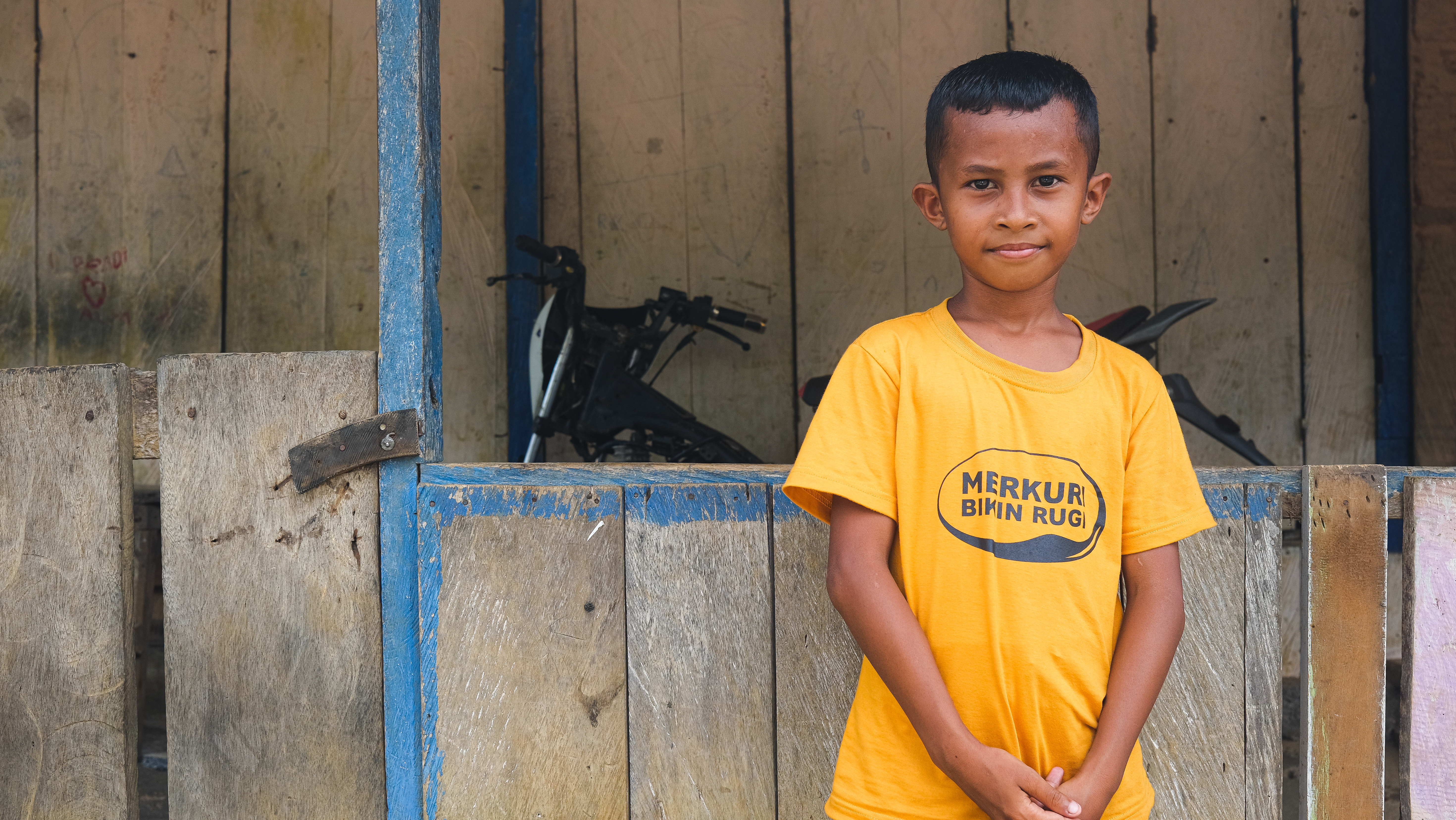
A student wears a gifted shirt titled mercury causes loss – as part of GOLD-ISMIA's campaign to raise awareness on the dangers of mercury.
According to the National Action Plan, the Government of Indonesia has reported a reduction in mercury by 10.45 tonnes as of the end of 2020. The latest Conference of Parties (COP-4) to the Minamata Convention on Mercury -- held in Indonesia in 2022 -- agreed to extend the phasing-out list of mercury products, and highlighted the importance of mainstreaming gender in the Convention’s work.
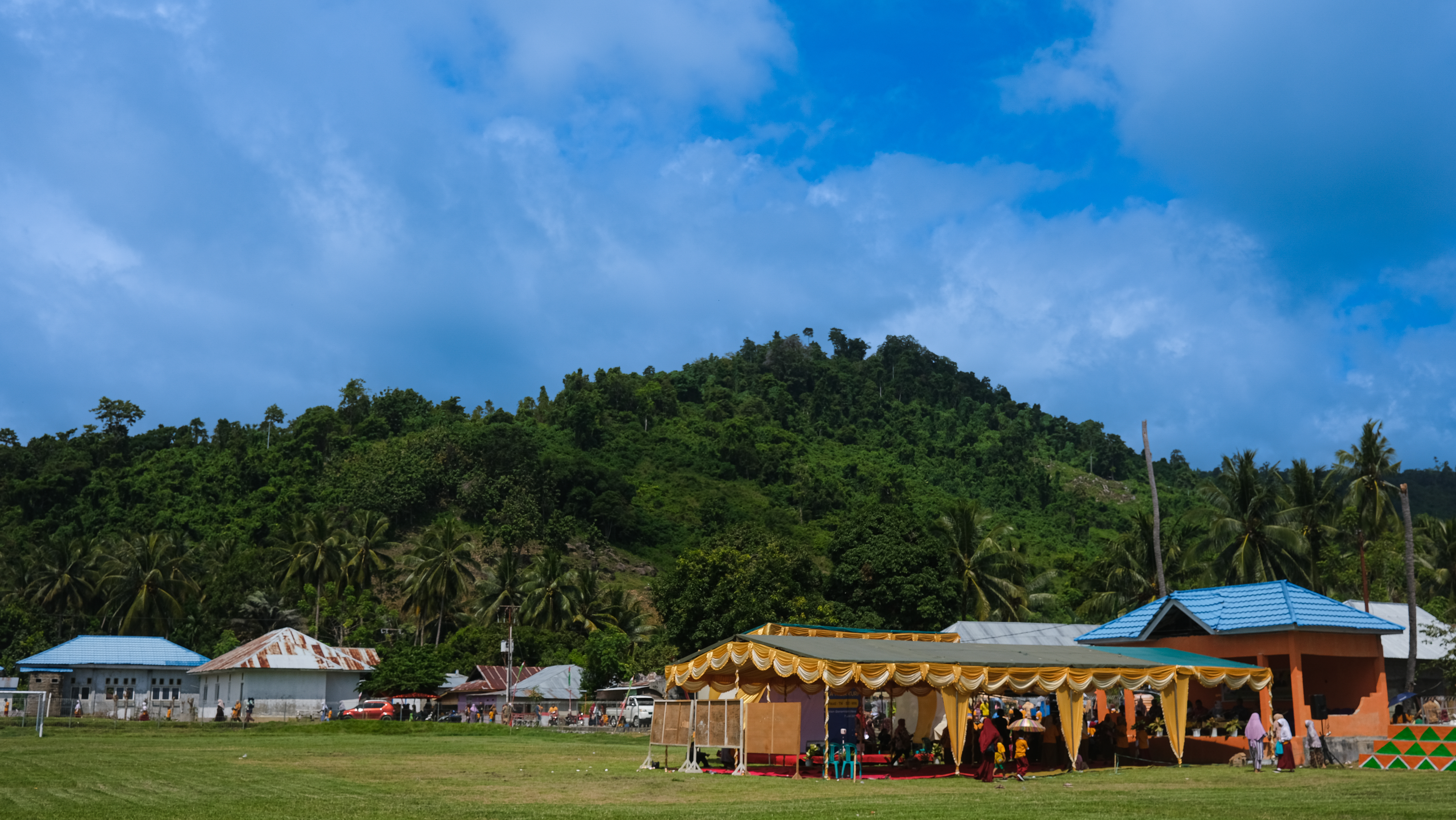
Underneath a yellow tent on a sunny day; a perfect environment for the storytelling event.
Women working in the industry have reported long-term health concerns. Most women work in ore processing and are exposed to large amounts of mercury waste, which has impacted their health adversely, even transmitting it to their children through breast milk. Babies exposed to mercury at a young age often experience developmental delays and reduced cognitive function. In addition, women carry out their work with little to no safety protection and are often not accorded the same rights and benefits as men in the industry.

All smiles as the winner; Sri posing happily with her certificate.
This event is a follow-up to a series of education advocacy that the project has been working on, one of which includes a coloring competition with the theme of "My Beautiful Village without Mercury". Inviting 5 elementary schools in North Gorontalo to participate.
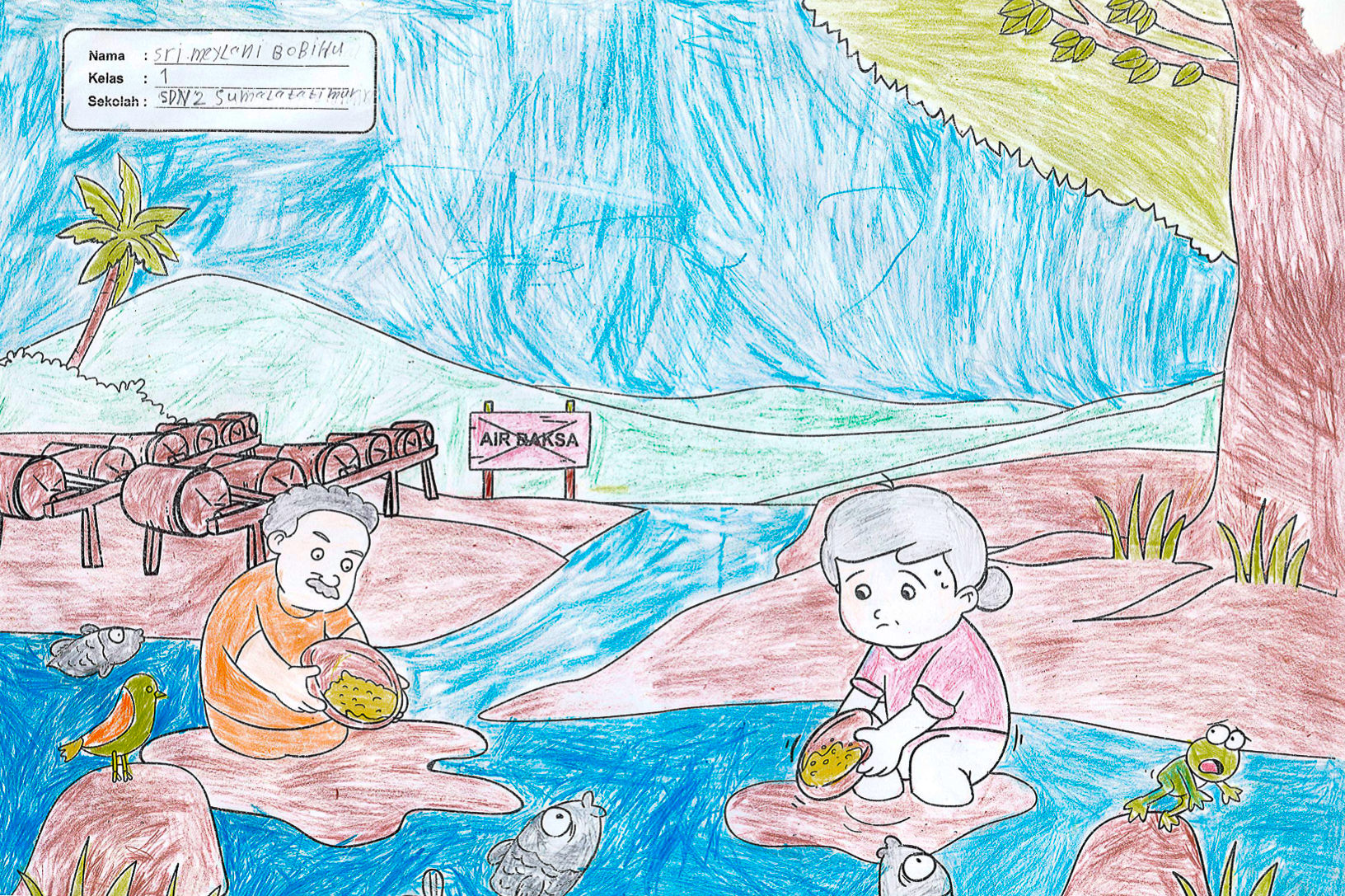
Blue river – Sri's dreamy interpretation of the river in her hometown, Hulawa.

Zatii, whose dream is to become an artist; poses nervously with his certificate after placing first in the coloring competition.
Zatii, the first winner of the coloring competition expressed differently. In his artwork, he expressed the reality of his village. "Fishes are dying," he said. "I colored the river brown as it is dirty because of mercury." Like most of his friends, Zatii's parents, too, are miners. When asked about his feelings, he mimicked the stories that he heard from Awam. "I just do not want my parents to be sick, like in the stories," he said.
Sarintan Anwar, a teacher elaborated more on her students' life. "Most of the students’ parents work as miners. Sri, herself, has to live with the extraction equipment in her backyard. Even our school is located near the mines. We are surrounded by danger."
These initiatives instill optimism and hope in the kids that they will become change agents for their community, ending the use of mercury and breaking the intergenerational cycle. Early intervention and education will teach Sri, Zatii, and other pupils about the hazards of mercury and how it affects their health and the environment, producing mercury history that they will be able to tell their future children and relatives.
***
Written and photographed by Eva Pastora
Edited by Tomi Soetjipto and Ranjit Jose

 Locations
Locations





